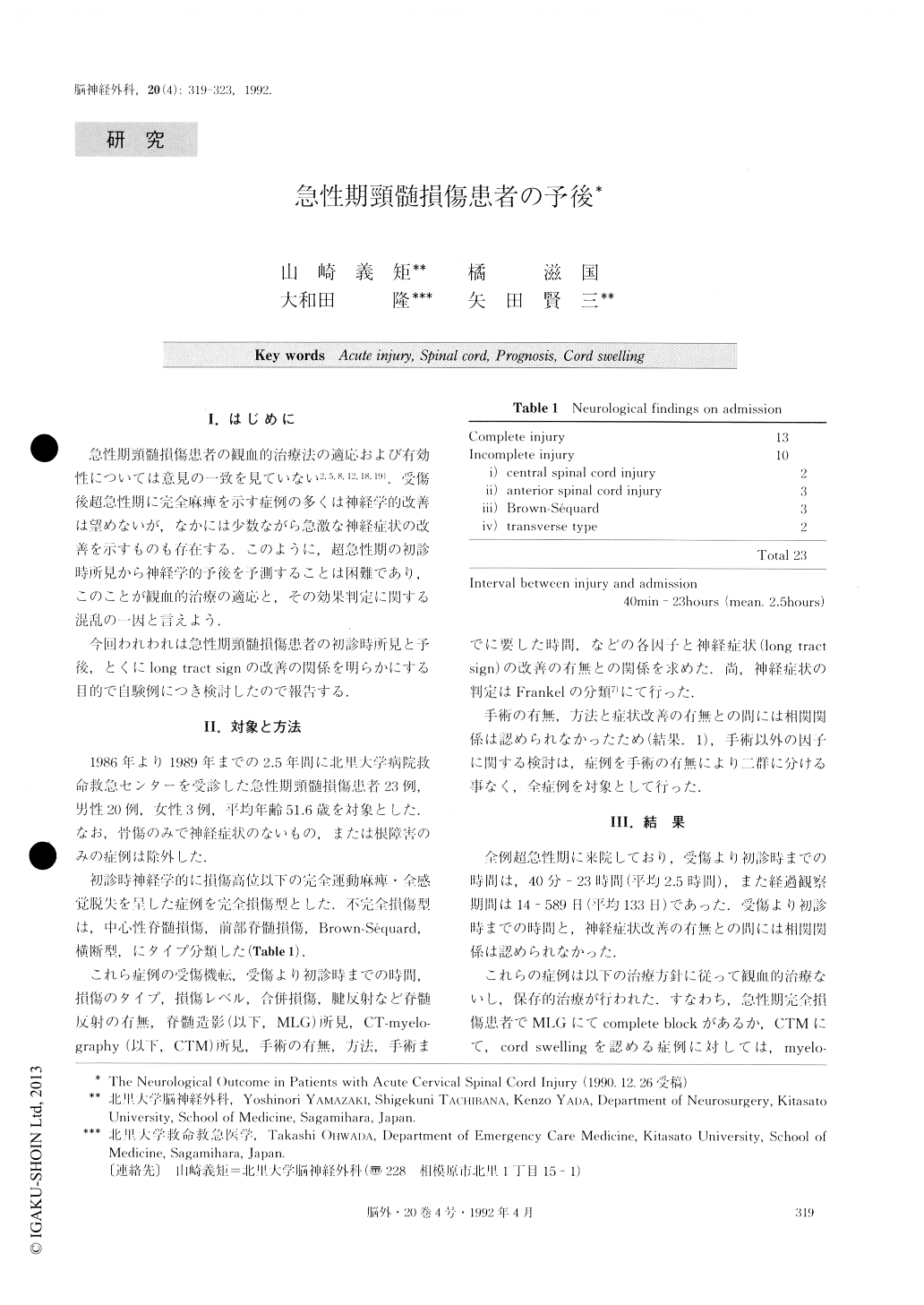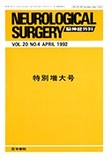Japanese
English
- 有料閲覧
- Abstract 文献概要
- 1ページ目 Look Inside
I.はじめに
急性期頸髄損傷患者の観血的治療法の適応および有効性については意見の一致を見ていない2,5,8,12,18,19).受傷後超急性期に完全麻痺を示す症例の多くは神経学的改善は望めないが,なかには少数ながら急激な神経症状の改善を示すものも存在する.このように,超急性期の初診時所見から神経学的予後を予測することは困難であり,このことが観血的治療の適応と,その効果判定に関する混乱の一因と言えよう.
今回われわれは急性期頸髄損傷患者の初診時所見と予後,とくにlong tract signの改善の関係を明らかにする目的で自験例につき検討したので報告する.
Twenty-three patients (twenty males and three females) with acute cervical spinal cord injury were cared for within a defined protocol and followed for 14 to 589 days (mean. 133days). We evaluated the rela-tionship between neurological recovery and neurologic-al examination, myelography (MLG), CT-myelography (CTM) on admission.
All of them were admitted to Kitasato University Hospital within 24 hours after injury. Thirteen of the 23 patients had complete injury, and the others had in-complete injury.
Result: Four factors were found to be related to neurological recovery. They included: 1) complete injury; 2) areflexia; 3) cord swelling on CTM ; and 4) complete block on MLG. Fourteen of 15 patients who had at most two of the four factors improved. But, no patients with three or four factors improved. Conclusion: These four factors have been recognized as indicators of bad neurological outcome. However, our result indicates that by our result, improvement of neurological function can be expected in patients affected by only one or two of these four factors. In other words these four factors have prognostic value for predicting the neurological outcome after acute cer-vical spinal cord injury.

Copyright © 1992, Igaku-Shoin Ltd. All rights reserved.


